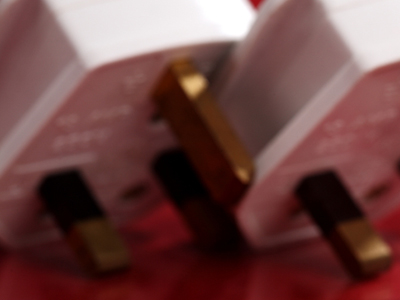This Physics quiz is called 'Electricity - Mains Electricity' and it has been written by teachers to help you if you are studying the subject at senior high school. Playing educational quizzes is one of the most efficienct ways to learn if you are in the 11th or 12th grade - aged 16 to 18.
It costs only $19.50 per month to play this quiz and over 3,500 others that help you with your school work. You can subscribe on the page at Join Us
Mains electricity is the phrase used to refer to the general-purpose 230 V AC electricity supply, as opposed to the specialist higher voltage industrial electricity supplies. You can regard it as the electricity that is supplied to normal wall sockets, lighting circuits etc. in homes and places of work like offices and shops. In senior high school Physics, mains electricity is focused on electricity in the home. Mains electricity is useful but, if used incorrectly, it can be deadly, so understanding this form of energy and how to use it safely is a very important life skill.
Any form of electricity is a source of energy which can be transferred into other forms of useful energy. There is usually at least one form of waste energy during any energy transfer. With home electrical appliances, it's a good bet that this waste energy will be heat (unless it is an electric heater of course!). This means that no appliance will ever be one hundred percent efficient, but some come quite close.
Electrical appliances all have a power rating. This represents the rate at which they transfer electrical energy into other forms of energy. The power rating is given in watts (symbol W), 1000 watts is also expressed as one kilowatt and you will often hear people talk about a three kilowatt heater rather than a 3000 watt heater but they mean exactly the same thing: at full power, the heater will transfer energy at a rate of 3000 joules every second. In everyday life, you will hear people talk about the wattage of an appliance but power is the correct scientific term.
Knowing the power rating is particularly useful for two reasons: it enables you to work out the cost of using an appliance, and you can also use it to work out the correct size of fuse. Electricity is sold in units of kilowatt hours. An appliance with a power rating of 2000 watts would use two units of electricity per hour. How do we know? As well as telling you how many joules per seconds is transferred by the appliance at full power, the power rating also tells you how many watts it uses per hour, so a 2000 watt appliance will use 2000 watts per hour, in other words, two kilowatts each hour which is 2 units of electricity. To find out how much that would cost you, all you need to do is to multiply that by the cost of each unit of electricity.
To work out the fuse size, you use the relationship between power in watts, potential difference in volts and current in amps (P = I V). You need to rearrange it to work out the current, so dividing the power by the potential difference will give you the maximum current used by the appliance. If you choose a fuse with a lower current rating than this, the fuse will keep blowing, so you choose the available fuse with the nearest but slightly higher value. Take for example the 2000 watt appliance mentioned in the previous paragraph. Dividing the power by the potential difference works out at a current of 8.6 A (based on UK mains voltage). Standard common fuse sizes are 3 A, 5 A, 10 A and 13 A so in this case, you would choose the 10 A fuse. Since a fault would produce a much higher current than this, it would still blow should the appliance develop a fault.








